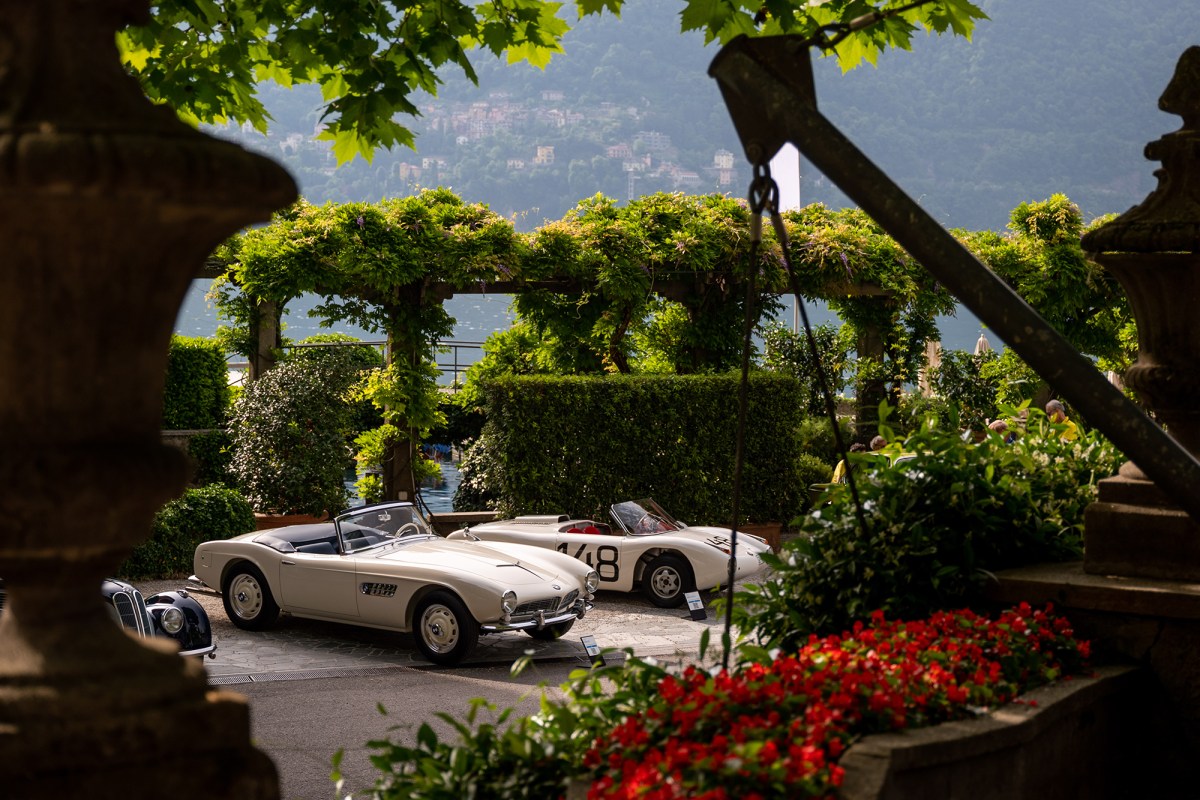[ad_1]
Concorso d’Eleganza Villa d’Este remains as grand and glamorous as the 16th-century royal residence where it takes place. The event, on the last weekend in May, attracts some of the most unique vehicles in existence. For 2022 a bevy of anniversaries (BMW M’s 50th, Ferrari’s 75th and Villa d’Este’s 150th) upped the ante for the already spectacular event, making the selection of a few show favorites a delightfully impossible task. Here, we focus on some of the highlights at this always-enthralling event.

The 1936 Cord 812 Phaeton, also known by its unofficial nickname the Coffin Nose Cord, was one of the show’s standout American vehicles. Designed by Gordon Buehrig, it is automotive art deco elegance at its finest. With inspiration taken from period aircraft, the sleek profile is nearly uninterrupted thanks to hideaway headlamps—an automotive first at the time. Paired with a powerful V8 built by aircraft specialists Lycoming, the 812 Phaeton caught the eye of mythologized American aviation pioneer Amelia Earhart who owned this stunning example in the year leading up to her tragic disappearance. It took home the Trofeo BMW Group Classic for the most sensitive restoration.

BMW M and Jägermeister racing celebrated their 50th anniversaries together showing this 1978 BMW 320 Gruppe 5 race car. The signal orange, box-flared brut competed in more than 80 races from ’79-82 with its most notable win during the World Championship 1000-km Nürburgring, finishing first in class and sixth overall. It crossed the mosaic tiles at Villa d’Este driven by Eckhardt Schimpf, who drove it across the finish line at the Nürburgring 43 years ago.

The 1934 Bugatti Type 59 Sports began its life on the racetrack as a part of Bugatti’s official racing team. During the ’34-35 season it won outright at the Belgian Grand Prix and placed third at Monaco, piloted by René Dreyfus. After its retirement from racing, it was converted by the factory to a standard sports car and painted black with a yellow racing stripe before its sale to King Leopold III. It collected the Trofeo Fiva honors for best preserved pre-war sports car, and hints of the original French racing blue paint peer through the black topcoat as a reminder of its racing legacy.

The Ferrari 250 GT moniker is associated with a decade-long slew of variations that helped the prancing horse solidify its place in automotive lore. In the late ’50s the GT Berlinetta Tour de France variation resulted in 77 vehicles all bodied by Scaglietti based on the Pininfarina design. This 1956 250 GT Berlinetta shown at the Concorso, however, is the first of five to be built by Zagato in Milan. The sweeping, coachbuilt body is both functional and an aesthetic statement, employing aeronautic techniques to decrease weight by over 100 pounds. The iconic double-bubble roof enabled pilot and passenger helmets to fit beneath an otherwise flattened and lowered roof line. This chassis, 0515GT, competed in the Mille Miglia, the Giro di Calabria and a number of Hillclimb sprints before its retirement from racing in 1958.

The BMW 507 might be the carmaker’s most beautiful commercial failure. The elegant, perfectly proportioned roadster was created at the insistence of Max Hoffman, the American importer also credited with pushing Mercedes to build street-legal versions of the 300SL race car. Designed by Albrecht von Goertz, the 507 featured a unique horizontal twin-kidney grille rather than the prescribed vertical elements. Though the intention was for the 507 to sell in large quantities, the expensive roadster met its untimely demise after only 252 vehicles were produced. This cream and blue roadster was one of 34 Series II cars that made it to the US as a new car and shows in better-than-new condition thanks to a recent comprehensive restoration.
Images by Chris Jeyes
[ad_2]
Source link https://coolhunting.com/design/highlights-from-concorso-deleganza-villa-deste/

Leave a Reply
You must be logged in to post a comment.